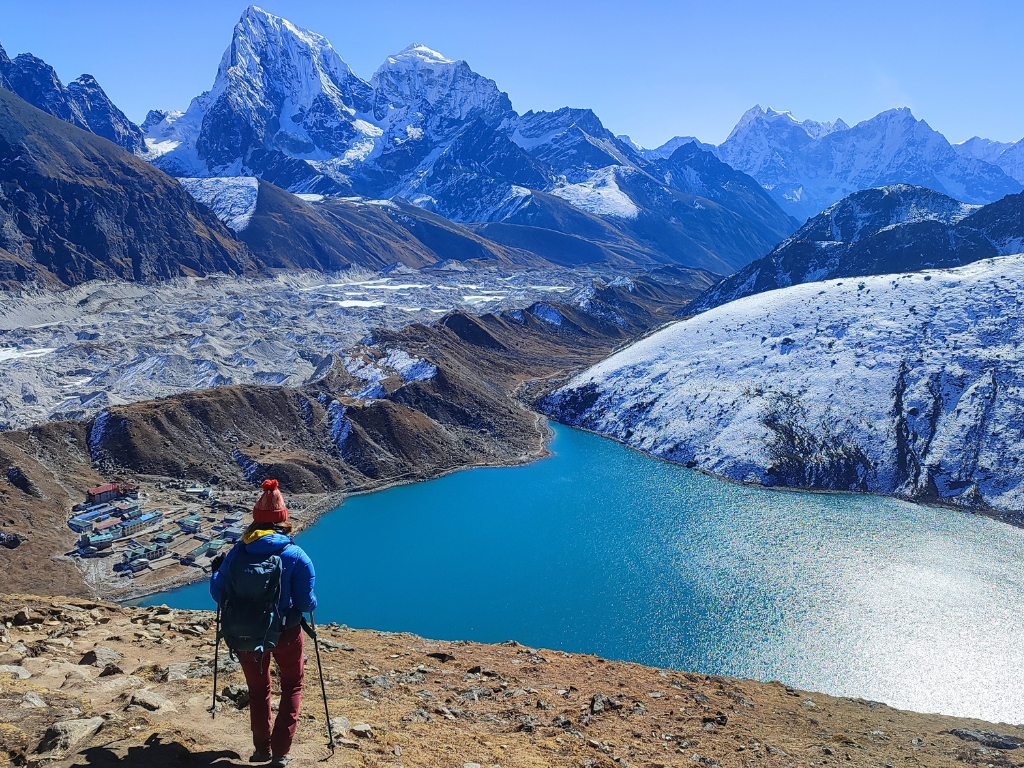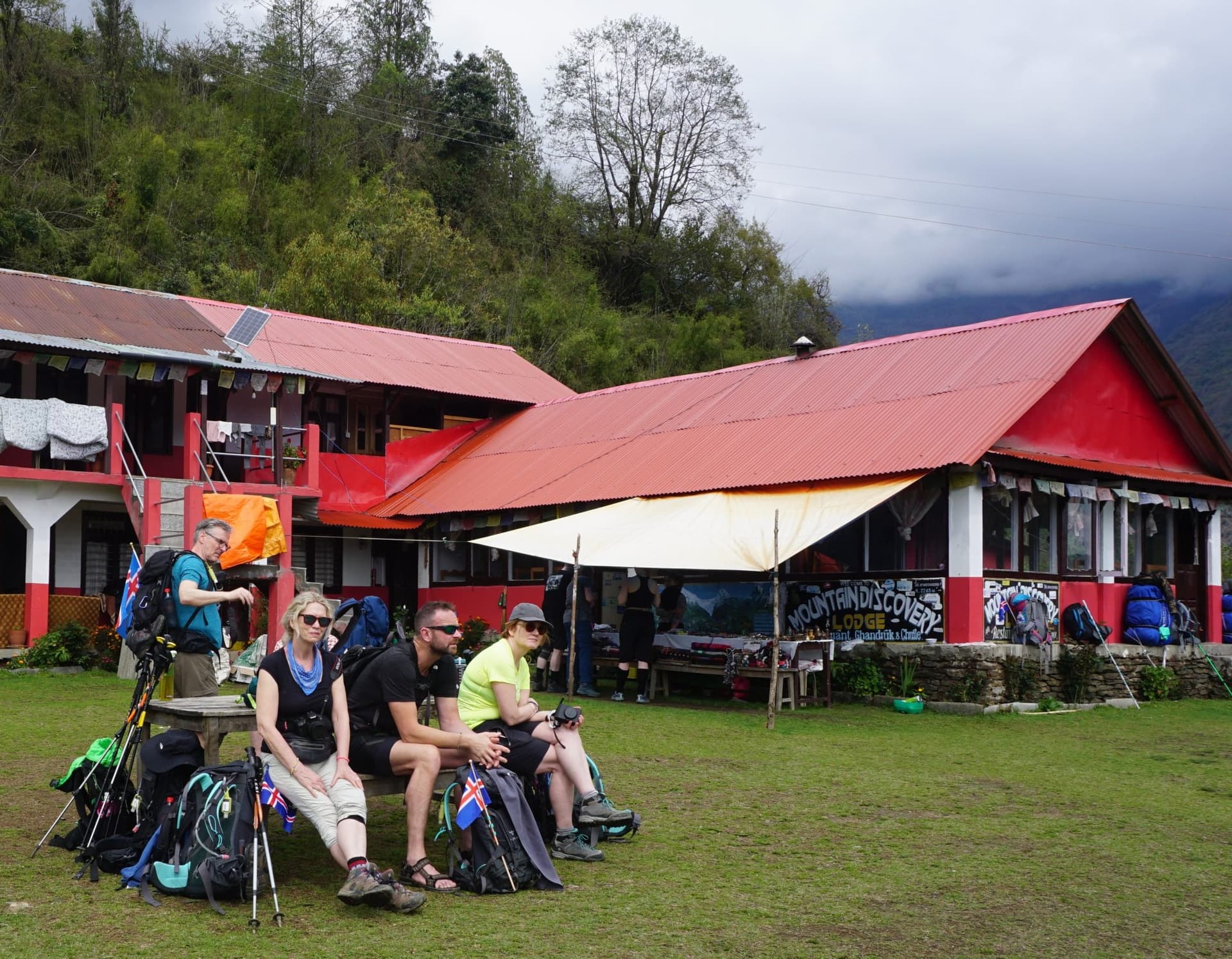Everest Base Camp Trek is an exclusive trip to get closer to the world’s highest peak, Mount Everest, and adore the magnificent mountain ranges, experience the wildest trails, and enjoy the incredible nature, landscapes, glaciers, unique cultural heritage, etc. along the way.
Due to its immense popularity, the Everest Base Camp region has always been prone to environmental degradation due to excessive human intervention. Unaware of the eco-friendly Everest trek or Sustainable Everest Base Camp Trek, the natural and pristine environment state has been treated thoughtlessly. As a result, the local people are the most vulnerable and are direct victims of trash pollution.
Despite installing trash bins and conducting cleaning programs in and around the Everest Base Camp area, there is no sign of considerable improvement till now. The main factor behind the trash on the Everest trek is the prospering business along the route.
Numerous lodges, cafes, fast food restaurants, internet connection, and other amenities have uplifted the local community economically, but unfortunately, they are a curse to the natural Himalayas.
To sustain the trekking to Everest Base Camp for present and future generations, follow the environment-friendly tips that minimize your intervention at the Everest Base Camp trek:
Carry Waste Collection Bags
The most basic rule to sustain the Everest Base Camp trek is not to litter the divine mountainous zone with garbage materials. So, while climbing up, carry waste collection bags and take down the trash you took up in those bags because the garbage disposal system is quite painful in the remote Everest region.
Sagarmatha Pollution Control Committee has installed more than 70 trash bins along the trails and has implemented door-to-door garbage collection services. Despite their best efforts, the result is unsatisfactory as the trek continues to become popular, and thus the routes remain tainted with unwanted pollutants.
You will see several trash bins installed at teahouses, but there is no guarantee that the waste you put in the bins will be disposed of or recycled on time. Hence, carry collection bags to keep most of the waste, and then bring them back to Kathmandu for disposal.
Choose the route via Gokyo Lake and Cho La Pass

The alternative way to sustainable trekking to Everest Base Camp is to avoid the main trails of the Everest Base Camp trek and take your route through Gokyo Lakes instead. This route is circular, so you won’t have to walk the same path again. The most beneficial thing about the one-way EBC trek via Gokyo Lakes is that you experience a quiet and serene journey among the mountains, allowing you to relax and enjoy nature more. No crowds or unwanted noise to distract you from the beautiful scenery in front of you.
The Everest Base Camp trek via Gokyo Lakes and Cho La Pass has a different route than the classical one. In this particular route, you walk up to Namche Bazaar as in the classical route. However, you take a different path from Namche Bazaar, deviating towards two small towns called Dole and Machhermo, leading to the northwest side where Gokyo Lakes resides. While heading towards Dole and Machhermo, you will witness spectacular views of Mt Ama Dablam, Mt. Khumbila, and Mt. Cho Oyu.
The Gokyo lakes are composed of five fascinating lakes and host golden Brahminy ducks. After passing the Gokyo Valley, you pass through Thangnak to reach Cho La Pass, which connects the Gokyo region with Everest Base Camp. Then you descend to Dzongla, and walk further to Louche, from where you continue with the main Everest Base Camp route again.
Go local to have your meals

The Everest Base Camp trek demands a significant level of physical fitness, which is impossible without proper nutrition. Most imported foods contain plastic, glass, or tin, and they add additional waste to the beautiful place. You might want to take high-protein snacks to the mountains, but remember to go for local organic food for meals.
Dalbhaat is available in all teahouses as it is a delicious and nutritious Nepalese meal. As you explore the local food in the teahouses, you also understand the culture and tradition of the local community and contribute to the local economy.
Stay focused on the trails

The beauty of nature in the Everest Base Camp area is so magnetic that you might get carried away or want to venture off-trails as the routes are wide. However, the eco-friendly trekking experts recommend you concentrate on the trail instead of venturing off the trail. It is for the sake of the preservation of exquisite plants and animals.
Follow the guidelines for sustainable EBC trek. That way, you can also show gratitude, and contribute to the sustenance of the amazing EBC trek for the future.
Use a refillable water bottle

As a responsible EBC trekker, you should avoid buying plastic water bottles that pollute the pristine Himalayas. If you do, you’ll end up disposing of them in dustbins. Due to the poor and scarce waste collection system, the bottles are either burnt or flown out to random places, degrading the beauty of Everest Base Camp trails.
Take a water purifier with you or have boiled water since tap water is unsuitable for most trekkers, causing stomach pain. As much as possible, practice environment-friendly trek by carrying two refillable bottles, not plastic ones. The refillable bottles are insulated stainless-steel bottles for purifying water with water purification tablets, or have an in-built filtration system.
Wear eco-friendly clothes
For sustainable trekking, try to go green in every way possible. Choose natural materials like cotton, hemp, linen, wool, and silk as much as possible for clothing. Avoid synthetic clothing that contains microplastics, notorious for polluting the environment. Pack a good amount of clothing so you don’t have to worry about washing clothes in the mountains, where you bask in the glory of gorgeous nature.
If you wash the clothes with microplastics during the trek, the pollutants may mix with the water, consequently fouling the mountain rivers and local water supply. In the end, it’s the wildlife and local people that suffer adversely from this situation.
Discourage Deforestation
The necessity of firewood in the Himalayas is one of the chief causes of deforestation. However, the eco-conscious EBC trekkers choose meals cooked using kerosene instead of firewood. They prefer solar power for hot showers. But it is not always possible.
As a sign of paying homage to the diverse flora that gives us so much, you can support a charity or organization that promotes reforestation in the mountains and valleys of the Everest Base Camp area, if you want.
Use toilets
It is easier to follow nature’s call in nature itself when you’re hiking up natural places like Everest Base Camp trails. Urinating and defecating in nature has a severe consequence of water pollution. So, try to use the toilets whenever they are available. There are many toilets on the way up to Everest Base Camp. If you must excrete in nature out of emergency, make sure you go about 100 meters away from natural water resources.
Conclusion
The Everest Base Camp trek is precious and glorious. Due to the heavy attraction, the destination and trails of the EBC trek are in a state of exploitation, knowingly or unknowingly. Hence, the wildlife and local people suffer adversely from the environmental pollution. Therefore, the government of Nepal welcomes all interested Everest Base Camp trekkers to trek in an eco-friendly manner.



